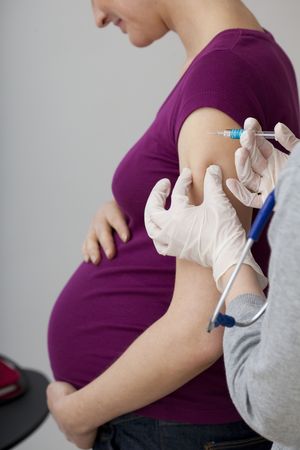Lack of sleep can increase the risk of death from prostate cancer in men under the age of 65.
The findings were based on two studies; the first one included 4,07,649 men who were followed from 1950 through 1972, and the second study included 4,16,040 men who were followed from 1982 through 2012.
All men were cancer-free at the onset. During the follow-up periods, 1,546 and 8,704 men died of prostate cancer, respectively.
Men under 65 who got three to five hours of sleep per night had a 55 per cent greater risk of dying of prostate cancer than men who got seven hours of sleep per night.
For men who slept six hours per night, the risk was 29 per cent higher than those who got seven hours of sleep.
Sleep deprivation can inhibit the production of melatonin, a hormone that affects sleep cycles. Low melatonin production can lead to increased genetic mutations, greater oxidative damage, reduced DNA repair, and immune suppression. Lack of sleep can also impair the genes involved in tumour suppression, the study author explained.
The findings were presented at the annual meeting of the American Association for Cancer Research.
Did You Know
One-fifth of 286 patients who sought a second opinion at the Mayo Clinic in the US had been misdiagnosed by their primary doctors; 66 per cent had a marginally altered diagnosis; only 12 per cent had received the correct diagnosis the first time.

Cap on tumour
A cap like device called Optune that destroys tumors with electrical current has been shown to significantly improve survival in patients with a deadly brain cancer.
The five-year survival rate more than doubled for newly diagnosed glioblastoma patients when Optune was added to standard chemotherapy.
“Glioblastoma is the deadliest primary malignancy of the central nervous system for adults,” the lead researcher said.
Before the approval of Optune, the median overall survival for newly diagnosed glioblastoma patients was about 15 months with standard therapies.
Results from a phase III trial involving 695 patients was presented at the American Association for Cancer Research Annual Meeting. The study randomly assigned 466 patients to Optune along with chemotherapy and 229 patients received chemotherapy alone.
Two-year survival rate for patients on both Optune and chemotherapy was 43 per cent compared to 31 per cent for patients on chemotherapy alone. The five-year survival rate was 13 per cent compared to 5 per cent with chemotherapy alone.
Overall, patients on the combined therapy had a 37 per cent lower risk of death than those on chemotherapy alone.
Sedative risk
Alzheimer's patients who are prescribed sedatives may have an increased risk of pneumonia, warns a Finnish study published in the Canadian Medical Association Journal.
People with dementia and Alzheimer's disease are often given sedatives, such as benzodiazepines over the long term. People with Alzheimer’s disease also have a higher risk of pneumonia and pneumonia-related mortality than persons without the disease.
The researchers reviewed data from 49,484 patients with Alzheimer's disease. The registries had information on prescriptions, hospital discharges and causes of death.
People with Alzheimer's who took benzodiazepines were 30 per cent more likely to develop pneumonia than those who were not given the sedatives.
The risk of pneumonia was greatest during the first 30 days of taking the drugs.
The researchers speculate that since benzodiazepines are sedating, they may increase the risk of food or saliva aspiration into the lungs, increasing the risk of pneumonia.
“Risk of pneumonia should be considered when weighing the benefits and risks of benzodiazepines in this population,” the study concluded.

Fatal weight
Being overweight or obese at any point in your adult life can increase your risk of death from cardiovascular disease, cancer, and other causes, according to a study published in the Annals of Internal Medicine.
The study was based on 2,25,072 men and women, whose weight history was tracked for 16 years and their highest BMI during the time period was noted.
The participants were then followed for another 12.3 years on average, during which 32,571 people died.
People who were overweight or obese at any point were more likely to have died from all causes, including cardiovascular disease, cancer and respiratory disease than people who consistently maintained a healthy weight.

Going up in smoke
Smoking kills more than 1 in 10 people worldwide (about 6.4 million deaths) and half of these deaths occur in just four countries—China, India, the United States of America and Russia, according to the latest report from the Global Burden of Disease study published in The Lancet.
The report was based on smoking habits in 195 countries and territories between 1990 and 2015. Smoking prevalence has actually gone down from 29.4 per cent to 15.3 per cent in 2015. But population growth has led to an increase in the overall number of smokers, going up from 870.4 million in 1990 to nearly a billion in 2015. One in four men and one in 20 women still smoke worldwide.
The ten countries with the largest number of smokers in 2015 were China, India, Indonesia, the United States of America, Russia, Bangladesh, Japan, Brazil, Germany and the Philippines, who together accounted for 63.6 per cent of the world’s smokers.
China, India and Indonesia accounted for more than half of the world’s male smokers in 2015, and the US, China and India had the most female smokers.
India has 11.2 per cent of the world’s total smokers.
"Smoking remains the second largest risk factor for early death and disability, and so to further reduce its impact we must intensify tobacco control to further reduce smoking prevalence and attributable burden," the senior author noted.
Did You Know
Low-calorie sweeteners such as sucralose and other artificial sweeteners may not be healthy as they may promote fat formation by allowing more glucose to enter the cells, especially in people who are already obese.
Study presented at the annual meeting of the Endocrine Society
Greying heart
Grey hair could be an indicator of heart disease, suggests an Egyptian study presented at EuroPrevent 2017.
The study included 545 adult men who were divided into groups based on the amount of grey hair and whether they had coronary artery disease.
The participants had CT angiography to check for coronary artery disease.
Their hair colour was graded on a whitening scale of 1 = pure black hair, 2 = more black than white, 3 = black equals white, 4 = more white than black, and 5 = pure white.
Information was also collected on traditional risk factors for heart disease, including hypertension, diabetes, smoking and family history.
A whitening score of 3 or more was associated with an increased risk of coronary artery disease irrespective of chronological age and other heart disease risk factors.
Those with coronary artery disease had a higher hair whitening score and were more likely to have atherosclerosis or plaque buildup in their arteries.
"Atherosclerosis and hair greying occur through similar biological pathways and the incidence of both increases with age. Our findings suggest that, irrespective of chronological age, hair greying indicates biological age and could be a warning sign of increased cardiovascular risk," the lead researcher suggested.
Anti-cancer aspirin
Taking aspirin regularly may lower your risk of dying from certain cancers, according to a Harvard University study presented at the annual meeting of the American Association for Cancer Research.
Previous research has already shown that aspirin may prevent cardiovascular disease and some kinds of cancer, especially colorectal cancer.
The current study included 86,206 women and 43,977 men.
Over 32 years of follow-up, 22,094 women and 14,749 men died; 8,271 women and 4,591 men died of cancer.
Overall mortality risk was 7 per cent lower for women and 11 per cent lower for men among regular aspirin users compared to non-users.
Overall cancer mortality risk was 7 per cent lower for women and 15 per cent lower for men among regular aspirin users. The biggest reduction was seen for colorectal cancer—31 per cent for women and 30 per cent for men. Women who were regular aspirin users had an 11 per cent lower risk of dying of breast cancer, while men had a 23 per cent lower risk of dying of prostate cancer.
“These findings suggest that aspirin’s established benefits in cardiovascular disease and colorectal cancer reduction may extend to other common causes of death, including several major cancers,” the study author said.
Since aspirin has risks, such as stomach bleeding and haemorrhagic stroke, people should talk to their doctors before going on an aspirin regimen.
Did You Know
Insomnia symptoms such as difficulty initiating sleep, difficulty maintaining sleep, or non-restorative sleep were associated with a 27 per cent, 11 per cent, and 18 per cent higher risks of cardiovascular and stroke events, respectively.

Maternal protection
Babies are less likely to get whooping cough if their mothers are vaccinated during pregnancy, according to a study published in the journal Pediatrics.
Pertussis, or whooping cough, is a highly contagious respiratory infection. It can affect people of all ages, but it is particularly dangerous and even fatal when babies catch the disease.
The US Centers for Disease Control and Prevention's Advisory Committee on Immunization Practices (ACIP) has recommended Tdap vaccination for all pregnant women regardless of whether they had been previously vaccinated. The vaccine can be given at any time during pregnancy, but preferably between 27 and 36 weeks' gestation.
Examining data on 1,48,981 infants, the researchers found that babies whose mothers got the Tdap booster vaccine were 91 per cent less likely to get whooping cough during the first two months of life, a critical period before babies usually get their first dose of the Tdap vaccine.
Babies whose mothers got the vaccine during pregnancy also had a 69 per cent lower risk of whooping cough in their first year of life, even after adjusting for the effects of the DTaP vaccination the children received starting at two months.
"Maternal Tdap vaccination during pregnancy was highly effective at protecting infants against pertussis before their first dose of the DTaP vaccine, and protection continued after the first DTaP dose through the first year of life,” the study concluded.

Acne vaccine
Here is good news for the millions who suffer from acne. A vaccine could soon be a reality!
Acne is the most common skin problem worldwide, and it affects adolescents and adults alike.
Researchers at the University of California in San Diego are working on a vaccine that could fight the bacteria that causes the breakouts.
“Acne is caused, in part, by P. acnes bacteria that are with you your whole life—and we couldn’t create a vaccine for the bacteria because, in some ways, P. acnes are good for you. But we found an antibody to a toxic protein that P. acnes bacteria secrete on skin—the protein is associated with the inflammation that leads to acne,” the lead researcher told Allure magazine.
The researchers successfully tried the vaccine on skin biopsies collected from acne patients.
The vaccine works by blocking the acne-causing effects of the bacteria without actually killing the bacteria themselves.
The researchers hope to start testing the vaccine on patients in clinical trials soon.

Pause easy
Women often go through vaginal and urinary problems during menopause, but do not see a doctor because they consider it a normal part of ageing.
But according to a patient resource page in the JAMA journal, if the symptoms are bothersome, women should seek help. Treating the symptoms can help improve quality of life and also help rule out other, more serious conditions that can cause similar symptoms.
During menopause, women experience genital and urinary tract symptoms known as genitourinary syndrome of menopause. Oestrogen levels drop causing the walls of the vagina to become thin, dry and inflamed. This can lead to vaginal burning, irritation, pain (especially during sex), bleeding or discharge. Some women also experience urinary symptoms, such as pain when urinating and urinating more often than usual.
Non-hormonal treatment options include vaginal lubricants or moisturisers that can ease dryness. Sexual activity can also help with vaginal symptoms.
Hormonal treatments include oestrogen administered either through the vagina or via a pill or skin patch.
Vaginal oestrogen is often recommended first. It comes in the form of a cream, tablet or ring inserted into the vagina. The oestrogen goes straight to the vaginal area without entering the bloodstream first, thus lowering the health risks, such as blood clots and some cancers, associated with oestrogen replacement.
But women who experience night sweats or hot flashes may need oestrogen treatment by a pill or a skin patch. All women who take oestrogen this way should also take progesterone.
Women should talk to their doctors about all treatment options including non-oestrogen hormone medications and lifestyle modifications.
Do it yourself
The US Food and Drug Administration has allowed the company 23andMe to market its genetic tests for 10 diseases, including Parkinson’s and Alzheimer’s, directly to consumers.
“Consumers can now have direct access to certain genetic risk information. But it is important that people understand that genetic risk is just one piece of the bigger puzzle, it does not mean they will or won’t ultimately develop a disease,” said the director of the FDA’s Center for Devices and Radiological Health.
The genetic tests look for more than 5 lakh genetic variants in saliva samples. The presence or absence of some of these variants is associated with an increased risk for developing any of the following 10 diseases or conditions: Parkinson’s disease; late-onset Alzheimer's disease; Celiac disease (the inability to digest gluten); alpha-1 antitrypsin deficiency (raises the risk of lung and liver disease); early-onset primary dystonia (a movement disorder that causes involuntary muscle contractions and other uncontrolled movements); Factor XI deficiency (a blood clotting disorder); Gaucher disease type 1 (an organ and tissue disorder); glucose-6-phosphate dehydrogenase deficiency (a red blood cell condition); hereditary haemochromatosis (an iron overload disorder); and hereditary thrombophilia (a blood clot disorder).
The tests are intended only to provide genetic risk information and does not determine a person’s overall risk of developing a disease.
“In addition to the presence of certain genetic variants, there are many factors that contribute to the development of a health condition, including environmental and lifestyle factors," the agency said in a statement.
“Results obtained from the tests should not be used for diagnosis or to inform treatment decisions. Users should consult a health care professional with questions or concerns about result,” the FDA said.
The Health and Ancestry Test kit costs $199.
Did You Know
Running a marathon can cause short-term kidney damage. The potential causes could be the sustained rise in core body temperature, dehydration, or decreased blood flow to the kidneys while running. But the kidneys of the runners recover fully two days after the marathon.

Pop with care
Prolonged use of antibiotics in early to middle adulthood could lead to precancerous growths called polyps in the colon and rectum that can lead to colorectal cancer.
The study published in the journal Gut focused on 16,642 women aged 60 years and older. The participants provided a history of their antibiotic use between the ages of 20 and 59, and they had had at least one colonoscopy. In this group, 1,195 precancerous polyps were diagnosed.
While the use of antibiotics within the past four years was not associated with a heightened risk of polyps, long-term use in the past was.
Those who had taken antibiotics for two months or more in their 20s and 30s were 36 per cent more likely to be diagnosed with polyps than those who had not.
The risk was 69 per cent greater for those who had taken antibiotics for two months or more during their 40s and 50s.
Taking antibiotics for more than 15 days was associated with a 73 per cent elevated risk.
Antibiotics may alter the type and diversity of bacteria in the gut and reduce resistance to hostile bacteria. Additionally, bugs that require antibiotics may cause inflammation, which is a known risk for bowel cancer, the study author explained.
"The findings, if confirmed by other studies, suggest the potential need to limit the use of antibiotics and sources of inflammation that may drive tumour formation," the study concluded.
CONTRIBUTOR: SHYLA JOVITHA ABRAHAM






